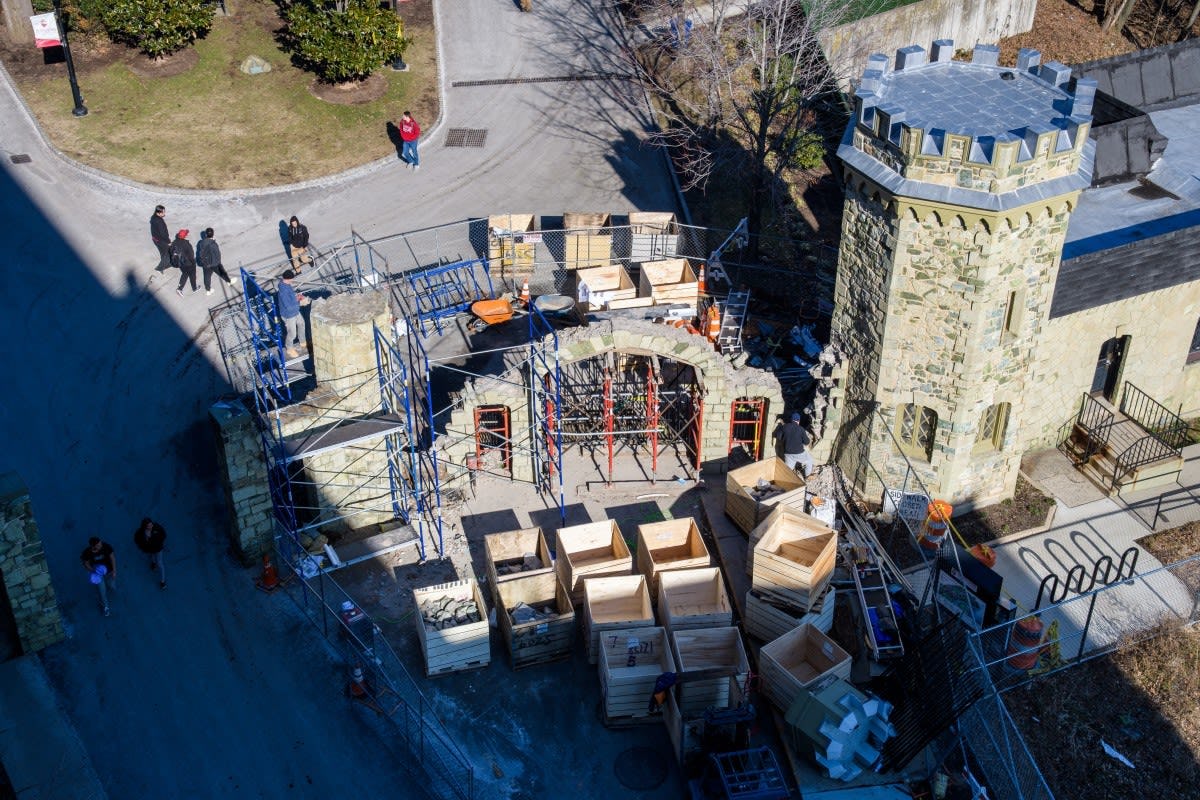An iconic structure is coming down but will return after completion of the Student Housing and University Center project
Stone by stone, the gatehouse — the last remaining structure of the Stevens family estate and the traditional entryway to the university — will be completely disassembled by next week. But don’t worry, once the Student Housing and University Center project is completed in August 2021, it will be reassembled with all the original architectural features in place, including the heart-shaped stone that sits on the bottom right corner of the iconic structure.
“That’s stone B2075,” says Senior Project Manager Richard Snyder, who works in Stevens Design & Construction Department. “It’s very unusual to see such a unique stone shape in an otherwise random wall pattern, but demonstrates the artistry and craftsmanship of the original masons when the gatehouse was built circa 1835.”
To preserve the gatehouse during construction, the university hired a historic preservation architecture firm, which conducted a survey and created a letter and number grid on the surface of the stones. Using that grid, the contractor, who specializes in historic preservation and restoration, numbered the stones and is removing, individually-wrapping and storing each stone from different sections of the gatehouse in their respective crates off-site.
The project was initiated in response to an accident that took place last fall, when a delivery truck tried to drive through the gate and slammed into it.
“After the accident, we brought in a structural engineer who determined that the arch was structurally unsound and needed to be disassembled for safety reasons,” says Snyder. “It’s important to note that the age of the arch is such that it is purely a masonry structure — there’s no steel or reinforcement of any kind, which is also very unusual in this day and age.”
With the amount of traffic anticipated on Wittpenn Walk because of the new Student Housing and University Center project, the decision was made to take the gatehouse down and store it until after the construction is completed.
“When it’s time to reassemble, the contractor will use the same drawing and grid to reconstruct all of the stones to be put back in the exact location with the exact sized mortar joint,” Snyder says. "It’s a very exacting process."
While the exact number of stones being removed and stored is not known, Snyder says it’s well over a thousand. “There are the stones you see on either side of the structure, but there are also stones in the thickness, between the exterior stones,” he says.
The gatehouse, which was built in 1835 by rocks quarried on site, originally served as the main entrance to The Stevens Castle, the family’s residence that was eventually conveyed to the Institute and subsequently used as dorms and administrative offices until its demolition in 1959 to make way for The Wesley J. Howe Center. The gatehouse is the oldest structure on campus and over the years has served as a residence for faculty and staff, student information center and headquarters to Stevens Campus Security.
“The gatehouse’s presence on campus can’t be overstated; it’s historically significant,” Snyder says. “It’s architecturally significant as a traditional form of architecture and, more importantly, it’s historically significant as the last remaining structure of the Stevens family estate and the traditional entryway to the university. It’s symbolic.”



